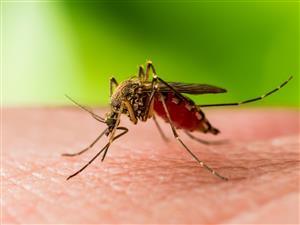
Credit: Nick Holonyak Mico and Nanotechnology Lab
Infectious diseases such as Zika and Dengue remain a top contributor to death and disability across the globe, according to the World Health Organization. Diagnosing and treating these diseases, which often have similar symptoms, is especially difficult in developing countries, where access to health care and laboratories is often limited.
Researchers at the University of Illinois at Urbana-Champaign are developing a lab-on-a-smartphone system that will enable healthcare professionals to detect disease at the point of care. Funded by the National Institutes of Health, the 4-year grant will enable the team to develop a handheld instrument that can detect and report the presence of pathogens in less than 30 minutes using a single drop of blood – all with a smartphone clip-on instrument that costs less than $10.
“This device can substantially reduce the time, cost, and inconvenience of doing a standard lab test, while still incorporating all the controls that make the test valid,” said Principal Investigator Brian Cunningham, Director of the Holonyak Micro & Nanotechnology Lab and a Donald Biggar Willett Professor in Engineering at Illinois. “The information can then be shared immediately with an online health care provider who can make decisions about treatment.”
The system will comprise three components: a microfluidic cartridge, a clip-on instrument, and a smartphone with a rear-facing camera. The phone’s software will be able to connect with a cloud-based service system that detects and reports the presence and concentration of a panel of viral pathogens.
The microfluidic cartridge will contain pre-dried “primers”, or short nucleic acid sequences, that specifically recognize and amplify
DNA from the pathogen targets. When the clip-on instrument interfaces with the cartridge – similar to putting a credit card into a credit card reader – the instrument will use LED illumination to excite fluorescent dyes within the cartridge. The camera will capture a movie of the reaction while it takes place, utilizing algorithms that can detect, track, and count the individual copies of DNA that are specific to each virus. The phone will then link to a cloud-based system to interpret the results and forward them to an offsite medical professional.
The project involves numerous technical challenges, one of which is creating a device that provides a reliable result even with a very small amount of blood. Another challenge is developing robust and accurate tracking algorithms for this new type of video data.
“We will have to model the signal and noise, due to many non-ideal conditions in the field, to come up with an optimal processing algorithm,” said Minh Do, a co-investigator and professor of electrical and computer engineering at Illinois, who is leading the image and video processing work. The research could result in other smartphone biosensing applications, he says.
Other research contributors include Grainger College of Engineering Dean Rashid Bashir, a faculty member in Illinois’ Bioengineering Department, and Ian Brooks, a research scientist in Illinois’ School of Information Sciences.
Once the group has a working prototype, they plan to take the device to a clinic in Brazil to test it in a real-world environment.
“Even in the United States, where we enjoy good access to diagnostic testing laboratories, it can take hours or days to have results from lab work,” Cunningham said. “We believe this can provide affordable access and fast results to patients around the globe.”
###
Media Contact
Brian Cunningham
[email protected]
217-265-6291
Original Source
https:/




